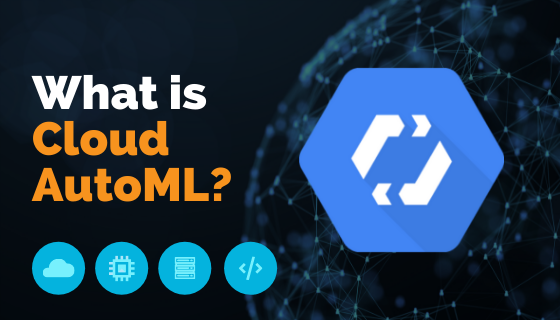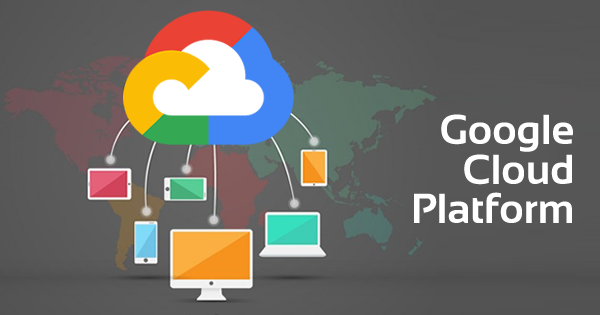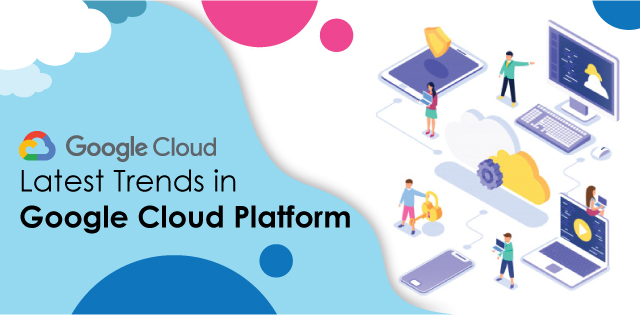Google introduced Cloud AutoML to make Machine learning easy and accessible to businesses that require AI and automation. Google developed Cloud Machine Learning Engine in 2017 that brought ML expertise to the industries and allowed engineers to build ML models to be put to use in different sectors. ML capabilities like NLP, translation, Vision, Speech were put to use to create better, more intelligent business applications. However, the Machine Learning capabilities are expanding and supporting their application in different fields; Google brought in Cloud AutoML.
Google Cloud AutoML can build high-quality custom-made ML models for businesses that are only recently venturing into ML. The Cloud AutoML system builds scalable ML models to ensure that businesses expand their AI applications and engineers can create advanced AI solutions.
Planning to take Google Cloud Certifications? Check out Whizlabs online courses, practice tests, and free test here!
The program of Cloud AutoML is created to build and train customized ML models with limited ML skills and low effort levels. There are different segments of applications to Cloud AutoML like Vertex AI, AutoML Vision, and Cloud AutoML Natural Language. Depending on the capabilities you want to incorporate in the model, you choose the segment you want to work in.
An overview of Cloud AutoML
The Cloud AutoML suite from Google has different Machine Learning capabilities depending on what you want to achieve with them. Starting from Vertex AI to AutoML Vision, to Video Intelligence, to Natural Langauge, the Cloud AutoML suite offers the diverse option of models to work with when designing an application. The brief touchdown on these capabilities of the Cloud AutoML are as follows-
-
Vertex AI
Vertex AI is the set of AI enabling MLOps software that has been designed to help engineers in building, experimenting, and deploying AI capabilities in their projects with the help of a unified AI platform. The MLOps software allows you to manage data and ML models very easily. With Vertex AI you can be sure of seamless integration of data and AI capabilities into your model. Vertex AI as a program works with different datasets like images, tables, text, and videos. Vertex AI unifies both ML training and custom training for an application and allows engineers to experiment.
-
Cloud AutoML Vision
Vision supports both cloud and edge computing in deriving insights from given images. A user can also use the pre-trained vision API model to understand and draw insights from images. The Vision API is also helpful in classifying images according to tags and custom labels. AutoML Vision also builds image metadata by using object and face detection, handwriting recognition, etc. The program offers many pre-trained ML models for deployment with the use of REST and RPC APIs.
-
Cloud Video Intelligence
The Video Intelligence interface of Cloud AutoML is enabled to annotate videos using customized tags. Video Intelligence analyses videos to improve content discovery on an application. The platform analyses streamed videos to detect a shot change and tracks specific objects. The real-time length analysis of the video dataset helps in extending useful insights towards improving customer experiences, given recommendations for content, and many more.
-
AutoML Translation
AutoML Translation is a set of programs that allow the translation of one language to another language on an app. With the help of this platform, you can create your language translation models. The translation program can be used to streamline translation queries so that effective replies are found. The translation software supports up to 50 language pairs for queries.
-
AutoML Natural Language
AutoML Natural Language is a set of software that scrutinizes a document and understands its structure and meaning intelligently. The structure of Cloud AutoML Natural Language is made of REST APIs. The system does sentiment analysis and helps in the classification of documents according to their features and characteristics.
On the other hand, the Cloud AutoML Natural Language section also deals with the extraction of a certain entity present on the document and labels it for better identification. The Cloud AutoML Natural Language API also has the option of customization for categories, labels, and sentiments depending on what you want to integrate into the application.
-
Cloud AutoML Tables
The Cloud AutoML Tables interface allows a team to customize and create machine learning capabilities for a certain application at great speed and efficiency. The Tables interface allows you to work with automated ML codes, which helps in the deployment of ML capabilities very easily.
The Tables interface makes the training of ML models easy as it uses exemplar tabular data to train given ML models and predict given datasets. Cloud AutoML Tables gather data, prepares it, and then use the tabular data to train a predictive ML model. The interface also reviews your ML model’s metrics to test its accuracy. Then it makes the model available for predictions.
In this article, we elucidate on the workflow of the Cloud AutoML Natural Language program and its application on datasets.
-
Cloud AutoML Natural Language
Learning about Cloud AutoML Natural Language is very important because Natural Language processing is utilized in Artificial Intelligence and Automation, both core processes of the industries. Cloud AutoML Natural Language works by viewing and analyzing a document, storing its characteristics for future use.
For example, the Natural Language API detects the sentiment and tone of the document to show writing style and intention. It also detects specific entities or words so that the document can be analyzed by the user. It captures the structure and meaning of a document to provide a summary of its purpose and usage.
Now that we are all using documents in real life, Cloud AutoML Natural Language does come into play for many applications in different sectors. Through Cloud AutoML Natural Language, you can easily analyze and classify a document. For a business that handles major communication snippets or documents every day, the Cloud AutoML Natural Language comes in as helpful.
How does the Cloud AutoML Natural Language work?
The Cloud AutoML Natural Language works via ML training codes that promote supervised learning in different applications. The codes train the application to identify certain entities and patterns to create an analysis and provide insights. The system is a cloud-based machine learning platform that enables analysis-based detection and learning from textual data. The program annotates certain entities and trains the algorithm to identify the pattern. From syntax to sentiments, the Cloud AutoML Natural Language works in textual and documentary analysis. The system classifies text into some pre-defined categories.
The steps of using Cloud AutoML Natural Language
The Cloud AutoML Natural Language puts your dataset through different steps to analyze it and create insights. The steps start with data preparation and then go on to analysis and training.
-
Data preparation
The training of a custom ML model for natural language starts with providing labeled examples of inputs to it. This prepares the model to label and classify future inputs according to an already existing database. Thus, you need to put together a dataset for model training. To gather a dataset, you need to assess the purpose behind the model and its process. You have to think of the skeleton of the model’s process so that you can train it for the desired outcome. The user has to define the outcome he wants to achieve, like the categories of classifications.
The user also has to ensure that the categories and text inputs he specifies should be understandable to humans. This is because the natural language module mimics human language and understands it. So, the inputs have to be in any humanly understood language. The exemplary inputs the user puts in have to denote the type and range of text he or she wants to classify regularly. All these criteria and requirements have to be considered while preparing the test dataset.
Another important regulation to consider is the implementation of fair-aware test cases. For example, the user always needs to ensure that he is not using the use case or the program to influence people and their lives negatively. Before putting your use case to implementation, always check it for human fairness considerations.
-
Source the data
Once the data framework and regulations are prepared, you can go on to source the input data. The user needs to tap into all the gathered data at his organization’s dispense. The user can analyze and filter the large-scale, unorganized data to find the dataset he requires. If he lacks access to the appropriate dataset, he can source it from a third party or collect it. The user also has the option to collect it manually too.
-
Include labeled examples in the dataset
When preparing the test dataset for training the model, the user needs to specify the categories the model has to classify. Then, he has to include at least ten text examples per category to ensure proper identification and training. The number and quality of examples are directly proportional to the later efficiency of the model. Always try to provide high quality and some examples. Once you start training the model, you can add more examples to retrain the model and increase its efficiency.
-
Manage the distribution of test examples
The user needs to ensure that the test examples are evenly distributed throughout the categories specified. An even distribution of test datasets over specified categories is always better because it prepares the model to face all the types of texts specified in the dataset. If you want to maintain a uniform efficiency for the ML model, you need to create a uniform input for all the categories.
-
Maintain the variety and diversity of queries
The ML model will work in a certain problem space to resolve certain statements. The ML model thus has to face different problem statements to prepare for all types of queries and categories. Thus, when you are creating the training dataset, always try to maintain its diversity and variety. Try to give very specific data that is relevant to the purpose and alignment of your application.
-
Match the input data to the desired output
While training the model with input data, also pay heed to the type of input you expect from the model. To get accurate analysis and predictions, the user needs to put in the appropriate input data that matches with the desired output. This improves the overall process and helps in creating accurate predictions.
Different datasets that come into use
Let’s know about the different datasets that are used by Cloud AutoML. Here’s the list!
-
Training dataset
The majority of the data that is put in initially should belong to the training dataset. The training dataset is used in gauging the parameters of the model and inducing supervised learning. This improves the overall pattern detection process.
-
Validation dataset
The validation dataset is put in after the training set is run and the model is trained. The validation dataset fine-tunes the whole model according to its hyperparameters. It is always better to use a novel validation dataset to fine-tune the algorithm of your model.
-
Test Set
The test set is run after the training and validation of your model are done. This is like a trial input to the model so that its application and efficiency are tested.
Once the ML model is trained with inputs, validated, and tested for a single run, you can then proceed to add real-time inputs as data to the Cloud AutoML Natural Language system. This can be done through three methods:
- The user can import stored datasets that have been classified and stored according to model-specific labels in created folders.
- The user can alternatively import data from his computer or cloud storage in CSV format. You have to include the category labels specified in the training dataset.
- If your dataset has not been labeled and classified, you can upload unlabeled data on the platform. The Cloud AutoML Natural Language UI will label each of the datasets in this case.
Once the import process is over, your model is ready to function, and its performance can be evaluated on the Cloud AutoML Natural Language platform.
Bottom Line
The Cloud AutoML is a suite of ML model creation and operation programs that enable businesses and people to create and run ML and AI-enabled applications. Because the Cloud AutoML suite is so diverse in the ML capabilities it has to offer. The suite is a complete solution to building and advancing ML operations in industrial settings. So, keep reading to learn more about Cloud AutoML to enhance your knowledge as a Google Cloud professional. You can also check out our certification and training courses and get enrolled to become a Google Cloud Certified Professional!
- Cloud DNS – A Complete Guide - December 15, 2021
- Google Compute Engine: Features and Advantages - December 14, 2021
- What is Cloud Run? - December 13, 2021
- What is Cloud Load Balancing? A Complete Guide - December 9, 2021
- What is a BigTable? - December 8, 2021
- Docker Image creation – Everything You Should Know! - November 25, 2021
- What is BigQuery? - November 19, 2021
- Docker Architecture in Detail - October 6, 2021



